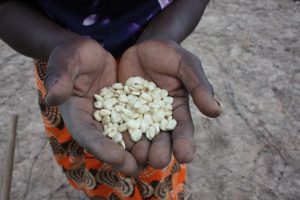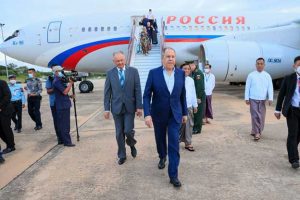Washington, DC, Aug. 11, 2022 (GLOBE NEWSWIRE) — FOR IMMEDIATE RELEASE
PRESS RELEASE
International Summit in South Korea
Toward Peace on the Korean Peninsula: Toward a World Culture of Peace
The Universal Peace Federation (UPF) is hosting "Summit 2022 and Leadership Conference," a five–day international summit with related peace events at the Jamsil Lotte Hotel in Seoul, South Korea, beginning this week.
World leaders from dozens of countries are gathering from August 11–15, 2022, to address paths to global peace, with a special emphasis on Africa, the Asia Pacific Region and reconciliation between North and South Korea.
A highlight of the August 12 opening ceremony is a presentation of a resolution to propose the development of a Peace Charter, which follows on the foundation of the Seoul Resolution signed at World Summit 2022 (February 2022) in Seoul by former UN Secretary General Ban Ki–moon and Cambodian Prime Minister Hun Sen.
Prominent international speakers will include: Rt. Hon. Stephen Harper, Canadian Prime Minister (2006–2015); Hon. Newt Gingrich, US House Speaker (1995–1999); Hon. Mike Pompeo, US Secretary of State (2018–2021); Hon. Dan Burton, US Congressman (1983–2013); and H.E. Brigi Rafini, Executive General, Community of Sahel–Saharan States and Prime Minister (2011–2021), Niger.
Later that same day, participants will hear about a recent UPF Fact–Finding Delegation for Peace on the Korean Peninsula from experts on Korea, including Gen. Walter Sharp, Commander of United Nations Command, Combined Forces Command and US Forces Korea (2008–2011); Amb. Harry Harris, US Ambassador to Korea (2018–2021); and Amb. Joseph DeTrani, Special Envoy, Six–Party Talks with DPRK (2003–2006). In addition, a special program will feature The Washington Times, now celebrating its 40th anniversary.
Multiple sessions will cover peace efforts in Africa, and feature a Resolution endorsed by African Religious Representatives and led by Imboni Prophet Radebe, founder of The Revelation Spiritual Home in South Africa.
Afternoon sessions will include presentations on threats to religious freedom across the globe that features Pastor Paula White–Cain, Senior Pastor, City of Destiny Church in the US; Hon. Jan Figel, European Union Special Envoy for the promotion of freedom of religion (2016–2019); and Dr. Massimo Introvigne, Managing Director, Center for Studies on New Religions, Italy.
On Saturday, August 13, symposia will be held around themes of unified Korea, a peaceful world, harmonizing science and religion, the women's movement, youth character education, and the role of the media and economics in the 21st century.
On Sunday, August 14, participants will travel to the HJ Global Arts Center in Seorak, outside of Seoul, for a special program hosted by Dr. Hak Ja Han Moon honoring her late husband and UPF co–founder, Rev. Dr. Sun Myung Moon and his lifelong efforts to establish peace around the world.
In addition to UPF International Chair Dr. Thomas G. Walsh, the summit's dozens of speakers will include Sheikh Mansour Diouf, Senegal; Hon. Ibrahim Natatou, Minister of Education, Niger; Hon. Hamza Said Hamza, Minister of Youth and Sports, Somalia; Hon. Adi Koila Nailitikau, First Lady (2009–2015), Fiji; Hon. Mwaba Tony, Minister of Higher Education, DR Congo; Hon. Neziha Labidi, Minister of Women, Family and Children (2016–2020), Tunisia; H.E. Dr. Sok Siphana, Chairman, Asian Vision Institute, Cambodia; Jim Rogers, Chairman of Beeland Interests, Inc.; Bishop Don Meares, Senior Pastor, Evangel Cathedral, USA; H.E. Callista Mutharika, First Lady (2010–2012), Malawi; Dr. Song Yong–cheon, Chair, Sunhak Foundation; Dr. Hwang Sun–jo, President, Sun Moon University; and Dr. Yun Young Ho, Director General, FFWPU International.
UPF is an NGO with General Consultative Status with the Economic and Social Council of the United Nations. It has been hosting dozens of forums and events that promote peacebuilding with leaders of 157 nations that have diplomatic ties to North and/or South Korea, in an effort to explore prospects for the peaceful reconciliation of the Korean Peninsula. The Royal Government of Cambodia has been a co–host to some of these events.
The August 11–15 events will have in–person speakers and participants, as well as a large global audience who will join digitally via a high–tech hybrid format.
UPF's works through a set of peacebuilding associations segmented into seven field–based organizations:
- International Summit Council for Peace (ISCP) and the International Association of First Ladies for Peace (IAFLP)
- International Association of Parliamentarians for Peace (IAPP)
- Interreligious Association for Peace and Development (IAPD)
- International Association for Peace and Economic Development (IAED)
- International Media Association for Peace (IMAP)
- International Association of Academicians for Peace (IAAP)
- International Association of Arts and Culture for Peace (IAACP)
For media inquiries, please contact:
William P. Selig | Communications Director, Universal Peace Federation
Ph: 240–274–1744 | Email: wselig@upf.org | Web: www.upf.org





